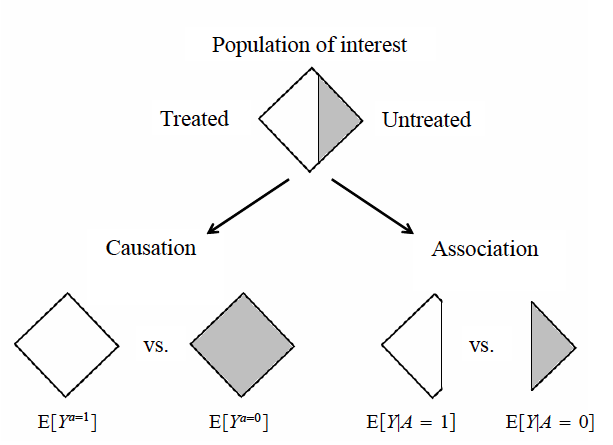Cool Image Explaining Causation Vs. Correlation
Back in October, Brendan mentioned that some folks at Harvard were working on a new book for causal inference that unifies concepts from both the graphical models literature and the counterfactual reasoning literature.
So far, I’ve found the drafts they’ve posted online very accessible. In fact, I strted reading it after writing a few blog posts on PlanOut and what I’ve been learning from the social science causal inference literature, and this book has put things in terms similar to how I explain the concepts to myself.
One particularly cool insight is this very evocative image in their first chapter, used to describe the difference between causation and correlation:

Another gem, this time from Chapter 2:
Randomization is so highly valued because it is expected to produce exchangability. When the treated and the untreated are exchangable, we sometimes say that treatment is exogenous, and thus exogeneity is commonly used as a synonym for exchangability.
Exchangability and independence are concepts we’re introduced to in machine learning or statistics. I’ve found myself having to recite “endogenous == correlated with the outcome” to remember what endogenous and exogenous variables are. The confusion arises, of course, from the fact that endogenous and exogenous are overloaded terms in computer science. It isn’t surprising that exogenous \(\leftrightarrow\) exchangable, but it isn’t something I would have come up with on my own, at least not without sitting around and thinking about it for a while.